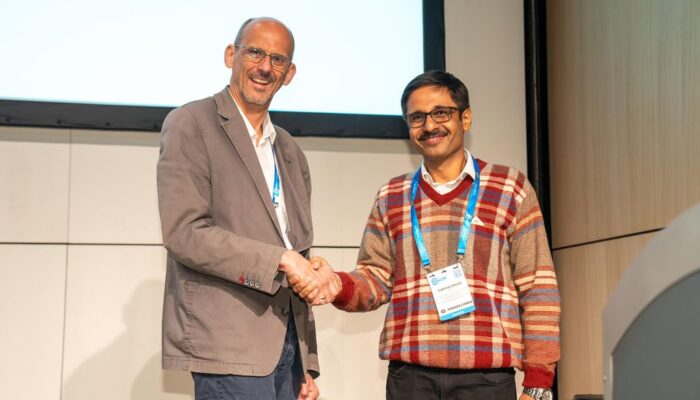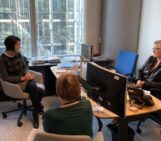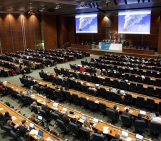
Last month, on 19 April 2024, Subimal Ghosh from IIT Bombay brought immense pride to India by receiving the Alexander von Humboldt Medal 2024 at the EGU 2024 General Assembly in Vienna, Austria. This prestigious award in Geoscience recognizes Ghosh’s exceptional work in hydrometeorology, climate services, climate education, and the societal impacts of the South Asian Summer Monsoon System. Ghosh is the second Indian to receive this honour, following Pradeep Majumder from IISc Bangalore, who received it in 2014.
During the ceremony, Ghosh humbly thanked his collaborators and PhD students, giving them credit for their contributions. This gracious gesture set the stage for his much-anticipated talk, where he offered new insights into understanding the Indian monsoon.
In his opening remarks, Ghosh thanked his colleagues and students for their support and contributions, sharing the honour with them. He then shared new insights about the Indian monsoon.
The Indian monsoon: Lifeblood of a nation
Ghosh explained the basics of the Indian monsoon and its crucial role in India’s economy. He emphasized how the monsoon impacts agriculture, which is essential for food security and exports. He also discussed the common use of the “magic number 10%” for predicting monsoons, which often leads to misleading results because it averages out important local differences. He stressed the need for a more detailed approach that considers these variations.
Land moisture’s fingerprint: Recycling ratio and regional differences
To provide a deeper understanding, Ghosh introduced the “recycling ratio,” derived from land moisture content using Lagrangian backtracking. This concept reveals how land moisture contributes to variations in monsoon rainfall. His research identified the Indo-Gangetic basin as a major contributor to land moisture, challenging the “magic number” further and highlighting regional asymmetries. Ghosh presented evidence of contrasting moisture anomalies, showing that surplus rainfall in Central India often coincides with deficits in the Northeast, and vice versa.
Seasonal changes and reducing errors in rainfall predictions
Ghosh then moved the discussion to inter-seasonal variations, revealing that land moisture significantly influences East-West asymmetry on these timescales. He introduced the concept of “Dry Bias” in global atmospheric models, which often underestimate Indian rainfall. His efforts to reduce this bias include better regional land-atmosphere modelling and improving the representation of the Himalayas in global models.
Vegetation’s two-way street: Feedback on monsoon rainfall
Ghosh explained how the types and amounts of vegetation in the Ganga basin affect and are affected by the monsoon. His research showed that even in dry years, moisture from the land is still important for rainfall.
Anthropogenic irrigation practices and the Indo-Gangetic basin
Prof. Ghosh highlighted how human activities, especially irrigation, influence the monsoon. He emphasized the need for region-specific models to better understand Indian conditions, given the variability in irrigation practices.
Simulations and policy implications
His team conducted simulations to quantify the impact of irrigation on the Indian monsoon, revealing a clear connection between irrigation practices and monsoon patterns. The study showed significant shifts in precipitation trends in north-western India.
Finally, Ghosh stressed the need for region-specific studies and accurate data, warning against the dangers of relying on general global studies that may not apply to India.
The three pillars: Water, food, and energy
Ghosh expertly discussed the complex connections between the Indian monsoon, water security, food production, and energy needs. He highlighted the crucial Water-Food-Energy link in India. By considering real-life Indian scenarios, Ghosh showed how changes in irrigation practices can impact the atmosphere and, in turn, affect monsoon rainfall patterns, especially in September, which is vital for farming. He revealed a worrying trend: uncontrolled irrigation, especially in the Indo-Gangetic basin, is depleting groundwater. This raises an important question: Is it sustainable to continue growing water-intensive crops in the Ganga basin?
Crop switching as a solution for sustainability
To address the issue of unsustainable water use, Ghosh suggested “crop switching.” This means replacing water-intensive crops like rice with more climate-resilient options like millets and sorghum. He used a simulation model to test this idea. However, making this change isn’t just about science; it also requires social change. Farmers need to be convinced of the nutritional benefits of these traditional crops, and there must be efforts to increase their demand and acceptance.
A critical evaluation of the river interlinking project:
Ghosh then discussed the proposed River Interlinking project, a large-scale water management plan in India. This project aims to tackle the challenges of uneven monsoon distribution. However, Ghosh raised a crucial concern: current government policy does not consider the important land-atmosphere feedback mechanism, which his research shows significantly impacts monsoon patterns. He emphasized the need to carefully evaluate the River Interlinking project considering these new insights. He warned that without addressing land-atmosphere interactions, dry regions might become even drier. Ghosh’s research encourages policymakers to re-evaluate the project to ensure it supports the Water-Food-Energy balance in India.
On the land-atmosphere network:
Ghosh’s team used advanced methods to reveal the connections between rivers, showing that land and atmospheric conditions within one river basin can affect neighbouring basins. This challenges the traditional view that neighbouring river basins are separate. His research highlights that these basins are interconnected through a complex web of land-atmosphere interactions.
Key takeaways from the Q&A session
After Ghosh’s engaging talk, he answered some intriguing questions from the audience:
Sustainable Practices for Water-Intensive Crops: One person asked about other sustainable practices besides crop switching. Ghosh acknowledged the potential for adopting sustainable methods within existing water-intensive crop cultivation, offering a more immediate solution.
Enhancing Regional Models with Local Data: Another question focused on improving regional land-atmosphere models. Ghosh stressed the importance of incorporating local irrigation practices to enhance the models’ accuracy and reliability, allowing for better predictions and decision-making.
River Interlinking and the Energy Sector: A question about the River Interlinking project’s impact on the energy sector prompted Ghosh to call for a holistic approach. He suggested the government consider the interconnectedness of water, food, and energy to ensure sustainable outcomes.
Bottom-Up Irrigation Practices: Ghosh emphasized the need for a bottom-up strategy, working with farmers and local communities to understand their specific needs and challenges. This collaboration would lead to more effective and inclusive solutions.




